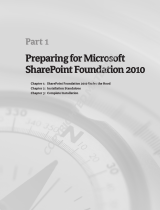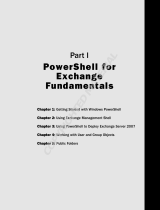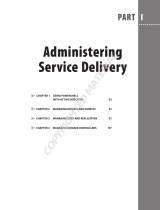
■ Single Domain — For multiple machines that belong to a single domain, you must provide the appropriate user
credentials (domain users with local admin rights) so that ASM/ME can successfully access the machines to perform
the required installations.
■ Single Workgroup — For multiple machines that belong to a single workgroup, each machine must have the same
local admin account credentials.
■ Multiple Domains — For machines across multiple domains, add or install on all the machines from one domain at a
time.
● The Remote Procedure Call (RPC) service must be running. This service should be started by default on Windows systems,
but if it is not running or if the firewall is blocking it, the installation will not work.
● If you are using the Browse Network option to add hosts to the HIT Group, ensure that browsing the network is working in
Windows. If you cannot add hosts by browsing the network, add them manually by using the Manual Entry option in the
Add Hosts Wizard.
● Copy the Setup.exe and Setup64.exe installation files into a directory of your choice. Because you must specify this
directory multiple times if you are adding several hosts for management or pushing out multiple installations, you can simplify
the process by copying the installation files onto a network shared directory. (The default installation directory is
C:\Program Files\EqualLogic\bin, so you can also place it there). ASM/ME will use these files to initiate the
installation procedure on remote hosts. These installation files are available on CD–ROM that shipped with your PS Series
array, or from the installation kit available at support.dell.com/equallogic.
Procedure for Installing HIT on Remote Hosts with the Add Hosts Wizard
1. Click the Add Hosts button.
2. Select one or more of the following methods to specify the list of hosts to add to your HIT Group, then click Next.
● Discover through PS Series group — When this option is selected, ASM/ME queries any PS Series groups that are
connected to any current HIT Group members (including the local host), and displays all the hosts connected to those
groups.
● Browse Network — Select a host by browsing a network. You can only browse networks for which you have permissions.
● Manual Entry — Specify an IP address or host name for each host that you want to add to the HIT Group. You can also
import a file that lists all the hosts that you want to add to the HIT Group. The file will be parsed and each host will be
run through the manual entry process. This file can be generated automatically from the ASM/ME console by clicking
File, then Export Host List. You can also create your own file for importing by saving a text file that contains a comma-
separated list of host IP addresses, host names (fully-qualified or not), or both. When you are back on this wizard page,
click Import and then browse to the file.
● Cluster Nodes — This option is visible only if ASM/ME detects that you are running a multiple node cluster in which one
or more of the nodes have not yet been added to the HIT Group. All cluster nodes should be added to the HIT Group. If
only a subset of nodes are added, cluster operations will fail.
NOTE: To view online help for any of the wizard pages, press F1 from that specific page.
3. Select one or more of the above options to identify which hosts to add, then click Next.
The HIT Installation and Host Verification page opens.
4. Perform all of the following steps:
a. Specify the credentials (domain, user name, and password) for the host you are adding. See the prerequisites in Install
HIT on Remote Hosts With the Add Hosts Wizard on page 15 for more information about these requirements.
b. Select the options to install MPIO or the PowerShell Tools on the host.
c. Specify the directory that contains the installation (Setup.exe and Setup64.exe) files.
d. Click Add Hosts to begin installation on the specified host.
Progress and status information is displayed. (An error message will be displayed if the installation or update cannot
complete.) When the process is complete.
e. Click Close.
The Summary of Hosts dialog box opens. This page displays the hosts that have been added to the HIT Group, and
what actions — such as installations or updates — have been performed on each host. This page also shows you
whether or not a reboot is required on the remote hosts.
5. If a reboot is required, click Reboot All. Otherwise, click Finish.
After the installation is complete on the remote host, you can launch the Remote Setup Wizard from the remote host in
order to initialize a PS Series array, configure the remote host to access a PS Series group, or to configure MPIO settings
for the remote host.
16
Installation
























